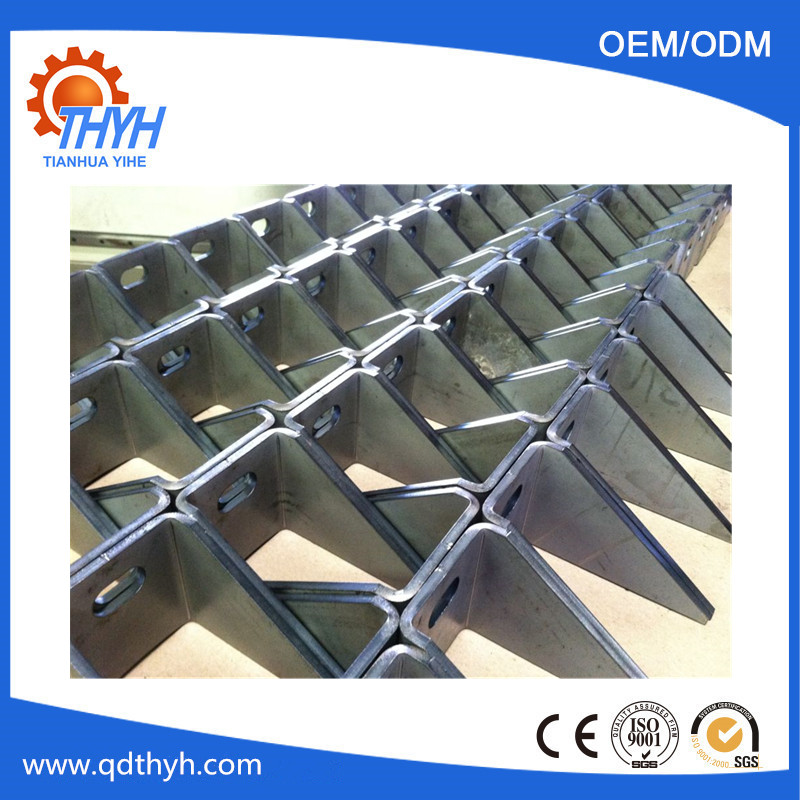Hot Keywords:
- All
- Product Name
- Product Keyword
- Product Model
- Product Summary
- Product Description
- Multi Field Search
Views: 119 Author: Site Editor Publish Time: 2024-03-22 Origin: Site

The sheet-metal fabrication" and "heavy-metal fabrication”are categories in the metalworking industry. They have different ranges of techniques, tools, and applications. This article intends to present in a highly technical manner a comparison between two vital areas within the manufacturing sector
The most important difference between sheet metal and heavy-metal fabrication is thickness, which implies material:
Sheet Metal Fabrication uses softer alloy materials; usually aluminum, mild steel, stainless steel, etc., which can be easily bent, cut, or formed into various shapes/sizes. These materials are normally thinner in nature and range between 0.010 inches to 0.250 inches (Brownell & Young 120).
Heavy-Metal Fabrication, on the other hand, deals with heavier materials that are mainly stronger in nature, i.e., they have higher tensile strength requirements. Parts produced through heavy-metal fabrication can range from 0.250 to several inches thick, often involving harder alloys or high-strength steels capable of carrying significant weights or stresses.
These differing material thicknesses give rise to distinct processing methods associated with each type of fabrication:
In sheet metal fabrication, for instance, forming usually includes methods like bending, folding, roll forming, stretch forming, among others, which are designed to shape thin materials into precise geometries without damaging them.
On the contrary, hot forming, forging, stamping may be necessary when working on complex parts that have intricate shapes or those that should exhibit a lot of strength in case one engages into heavy-metal fabrication (Smith 100).
Although both types employ laser cutting, plasma cutting, waterjet cutting, etc., settings used by these two divisions vary greatly due to different power demands where the latter requires more energy concentration for penetration down onto thicker stuffs during heavy-metal operations.
On the other hand, welding techniques employed in these two fabrication types differ since sheet metal relies on spot welding/TIG/MIG which apply only to thinner gauges. In contrast, heavy-metal fabrication may require intensive welding processes, for example, electric arc welding or even electroslag welding when making things like large components (Brownell & Young 120).
Applications of each type of fabrication can be found in various industries:
Sheet Metal Fabrication, for instance, is often applied in manufacturing electronic enclosures, HVAC systems, automotive body panels as well as food processing equipment. This makes it necessary to include several light gauge materials that are able to withstand loads while at the same time being easy to shape (Smith 100).
Heavy-Metal Fabrication is therefore crucial in areas such as construction industry ship building and oil & gas exploration where one needs robust materials. This includes creating support structures, bridge components, pressure vessels, and offshore drilling platforms meant to survive extreme forces including environmental conditions that might otherwise cause a collapse.
Quality assurance/safety concerns are common with both fields albeit they have different approaches:
Quality Control: Therefore sheet metal fabrication often involves precision measurements and tight tolerances requiring gauges and inspection tools for dimensional control purposes whereas heavy-metal fabrication could involve non-destructive testing methods such as ultrasonic or radiography inspections aimed at checking welds integrity or material soundness (Smith 100).
Safety Protocols: Thus every operation within these areas has stringent safety protocols designed by their nature; however, heavy-metal fabrication might involve additional considerations related to handling massive weights and dealing with high heat during welding or hot forming operations.
To summarize, sheet metal and heavy-metal fabrication are special sections of the metalworking industry that have distinct solutions to the issues faced by different sectors. Which one to choose is determined by project-specific needs such as thickness of material, strength required, and intended use. Understanding what each can and cannot do will help a person know which has to be adopted for any specific engineering problem.